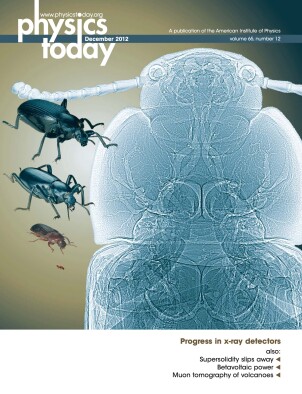Measured responses to quantum Bayesianism
DOI: 10.1063/PT.3.1800
Some time ago, John Bell and I wrote a tongue-in-cheek article on the interpretation of quantum mechanics; 1 in it we remarked that only a minority of physicists had any interest in the topic and that the typical physicist thought he would understand it “if ever he can spare twenty minutes to think about it.” According to David Mermin, however, that situation has changed dramatically, and “new interpretations [of quantum mechanics] appear every year.”
Actually, most textbooks on the subject continue to be based on the well-established Born interpretation of quantum mechanics, which postulates that the absolute square of the Schrödinger wavefunction, projected onto a particular quantum state, gives the probability for the occurrence of that state after an appropriate measurement has been made. Mermin indicated that the problem with the Born interpretation involves a confusion, “prevalent among physicists,” regarding the nature of probability. He presented his preference for a “personalist Bayesian view,” which leads separate “agents,” like Eugene Wigner and his friend, to make different probability assignments based on their beliefs. But as Richard Feynman remarked, “Nature does not know what you are looking at, and she behaves the way she is going to behave whether you bother to take down the data or not.” 2
Indeed, as applied to experiments, probability simply corresponds to the relative frequency for the occurrence of a given final state after identical states are prepared initially and measurements are made by appropriate detectors—devices that, through an irreversible macroscopic process, provide a permanent record of the outcome. Hence, the results of an experiment are independent of any observers, whose only role is to set up appropriate measurement devices, calculate the probabilities from quantum theory, and then write papers based on the recorded results.
As Max Born also emphasized, in classical mechanics the situation is analogous, when one takes into account that in practice initial conditions in an experiment are known only imprecisely. 3 Hence the observed evolution of the system is also determined by a probability function that satisfies the Liouville equation. But in that case, after a measurement is performed, no one talks about the “collapse” of this classical function, whereas in quantum mechanics it is common to use that controversial expression for the Schrödinger wavefunction.
Mermin discussed a “shifty split” between the classical and the quantum domain, a split that supposedly “haunts quantum mechanics.” He claimed that “regardless of what is split from what, all versions of the shifty split are vague and ambiguous.” However, that is not always the case, as a simple example shows. Consider an initial quantum wavepacket for a particle under an attractive central force that varies inversely with the square of the radial distance—the classic problem of planetary motion from the viewpoint of quantum mechanics, for example, or an excited electron in a Rydberg atom. For a finite time, the wavepacket will follow a classical Keplerian elliptic orbit, but like the Liouville distribution for the analogous classical problem, from the outset it will disperse due to the spread in initial position and momentum.
For the classical distribution to be in close correspondence with the quantum wavepacket, its initial spread is assumed to satisfy the uncertainty relation. Eventually, however, the head of the wavepacket, like in the classical distribution, will catch up with its tail. Afterwards, further spreading of the wavepacket leads to interference effects between the two components, and the classical–quantum correspondence ceases to be valid. The time when such interference effects first appear is of order nτ/3, where n is the mean principal quantum number of the wavepacket and τ is the Kepler period.
4
Experimentally, that transition has been observed to agree with theory in Rydberg atoms
5
for n = 100, τ = 152 picoseconds, and nothing shifty about this classical–quantum correspondence is found. For planetary orbits, however, n is of order 1070, and therefore the answer to Albert Einstein’s often repeated remark “Is the moon there when nobody looks?” (see David Mermin, Physics Today, April 1985, page 38
References
1. J. S. Bell, M. Nauenberg, in Preludes in Theoretical Physics, A. de Shalit, H. Feshbach, L. van Hove, eds., North Holland, Amsterdam (1966), p. 270;
reprinted in J. S. Bell, Speakable and Unspeakable in Quantum Mechanics, Cambridge U. Press, New York (1987), p. 24.2. R. P. Feynman, R. B. Leighton, M. Sands, The Feynman Lectures on Physics, vol. 3, Addison-Wesley, Redwood City, CA (1989), p. 3–7.
3. M. Born, Dan. Mat. Fys. Medd. 30 (2), 1 (1955).
4. M. Nauenberg, Phys. Rev. A 40, 1133 (1989). https://doi.org/10.1103/PhysRevA.40.1133
5. M. Nauenberg, C. Stroud, J. Yeazell, Sci. Am., June 1994, p. 44. https://doi.org/10.1038/scientificamerican0694-44
More about the Authors
Michael Nauenberg. (michael@physics.ucsc.edu) University of California, Santa Cruz.
